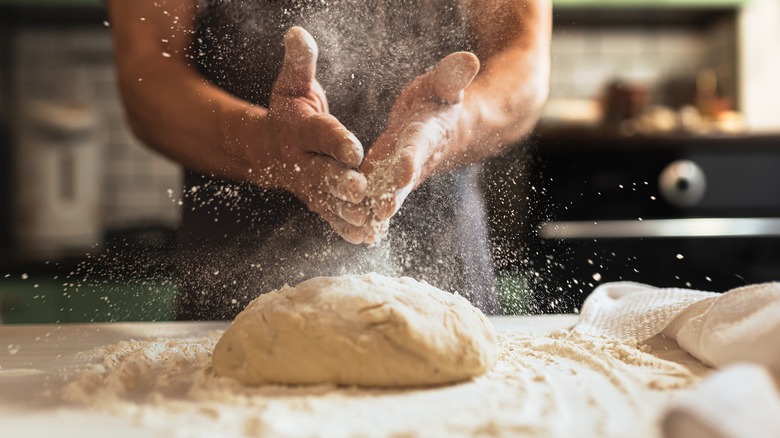The Bizarre Trick Thomas Keller Learned To Get The Perfect Pasta Texture
When you decide to whip up a pasta dish, you have two primary choices for the base: You can reach for a box of dried pasta for a quick and convenient option, or you can start creating pasta dough from scratch. While there are certain situations where dried pasta may serve your dish better, if you want the pasta to be the star of the show, fresh pasta is often the way to go as the addition of eggs makes fresh pasta a bit richer.
However, making fresh pasta can seem a bit intimidating to even veteran home cooks. There are a lot of potential fresh pasta mistakes to avoid, and the vast majority occur before you even think to drop your pasta into boiling water. Ultimately, you need the dough to be at the correct consistency, and while precisely measuring your ingredients and using the right flour for making pasta are both important, there's an easy tactile tip that chef Thomas Keller picked up from an Italian nonna a.k.a. a true pasta aficionado.
According to MasterClass, for your fresh pasta to have the perfect texture, you want it to have approximately the same amount of give and the same feel as your earlobe. So, gently pinch your earlobe and do the same to your pasta and compare the two — if your pasta is significantly softer or harder, you likely won't get the result you desire.
Getting your dough to the perfect texture
So, you know that you're aiming for a pasta dough that feels the same as your earlobe — but, how exactly do you get to that point once you've carefully combined all your ingredients?
First of all, pasta dough has to be kneaded, not just mixed. You use the same technique you would for kneading other types of dough, pushing the heel of your hand into the ball of dough, rotating it about 45 degrees, and continuing the motion over and over again. When done by hand, it should take roughly 5 to 7 minutes, although it always depends on the exact dough you're working with, as some require a bit more kneading time to get to the right consistency. While you certainly can use a stand mixer, you won't have the same level of control over the feel of the dough — when you're doing it by hand, you can feel it transforming.
Then, before you eagerly start rolling the dough out into your desired pasta shapes, make sure you give the dough some time to rest. This crucial stage allows the glutens to relax after all that kneading and flour within the dough to hydrate. While opinions vary on exactly how long an ideal rest time is, a minimum of 30 minutes is needed. Test out whether your rested dough has the nonna-approved earlobe texture, and if so, you're all set.

